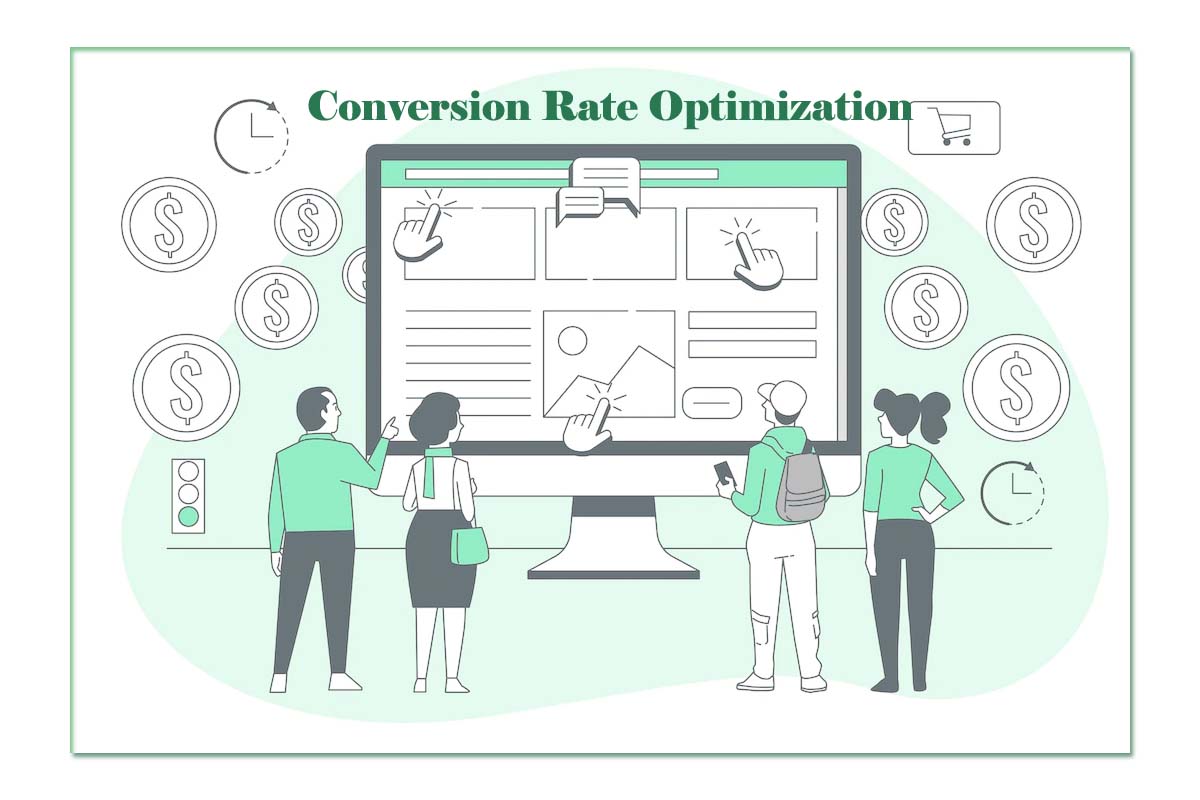What is Conversion Rate Optimization?
Introduction
Conversion rate optimization is the method of increasing the percentage of conversions of the website or even phone app. It basically involves generating ideas for elements on your site or app that can be improved.
Thus, conversion rate optimization, or CRO, improves a website and its content to drive conversions. Therefore, a high conversion rate will result from having a well-designed website formatted effectively and attractively for your target audience.
Some various specific actions and strategies help increase the conversion rate. Still, it is essential to understand that conversion rate optimization is a process that requires dedication. And iteration and not a single activity. And since it is always possible to improve results, regardless of the level of improvement, the optimization process should continue as long as the business exists.
Target Identification
The process begins with clearly articulated goals. Without clear objectives, it is not possible to optimize anything. That is why it is highly recommended to think and define SMART objectives:
Specific: circumscribed to a particular aspect, task or action. An objective is clear if it tells us precisely what we hope to achieve.
Measurable: it is necessary to have the means to measure them, whether they are software tools or an analysis methodology that makes it possible to know to what extent the expected results are achieved.
Achievable: an achievable objective is perfectly possible under the available conditions. At this point, it is essential to specify through which action or actions it is intended to achieve said objective.
Relevant: A relevant goal aligns with the business’s general objectives.
Temporary: SMART objectives are quick and are limited to a specific time.
Data Collection and Analysis
Once the objectives have been set, the baseline of the metrics to be used must be established. Thus, collecting the reference and/or starting data and projecting the target values will be necessary for each of them.
One of the keys to the success of the CRO is the analysis of the data collected. Therefore, it is essential to ask yourself:
- What is the current conversion rate? Is it acceptable?
- What is hurting the conversion rate?
Hypothesis Formulation of Conversion Rate Optimization
This is where all the optimization starts. Without hypothesis formulation, you can’t optimize anything simply because you don’t know what you’re trying to improve.
But when formulating hypotheses, we must avoid a widespread mistake: relying on assumptions, not data. Of course, every person in a business has ideas about what works, what doesn’t, what users are looking for, and more. But those ideas are mere assumptions and should not be taken into account.
The only thing that should be worth it is to test the ideas and let the users, with their correctly measured actions. Say what works for them and what doesn’t.
So, once you’ve identified the things that are likely hurting your conversion rates, hypothesis building is to make assumptions about how the problem you’ve identified could be fixed.
Design and Implementation of Variants
Based on the hypotheses along with your data, it’s time to create the variants of the web elements to be tested. Tests take time, not only to make the variants and configure them but also to run them.
And although there is no predefined limit to the number of tests that can be run on a site, if a website does not receive a lot of traffic. Then, it is advisable to limit the number of run tests because it will take more time to obtain a statistically relevant volume of data.
Execution and Analysis of Results of Conversion Rate Optimization
As we all know, every test must be run until it reaches statistical significance; otherwise, it will not be possible to trust the results obtained. The time it takes to get statistical relevance depends on the number of variants tested and the number of conversions occurring.
Therefore, the results should be analyzed during execution, especially after running a test. The most common is to compile the data in a report that shows the timeline and metrics for each variant and, most importantly, the conclusions and recommendations based on these.

